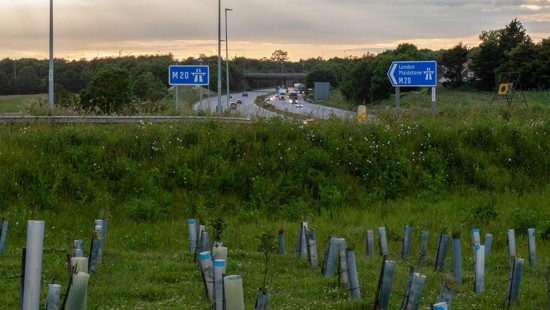The Times on tree planting

Our response to an article in The Times which appeared on 4 August 2023.
At the weekend, an article in The Times focussed on figures from an FOI response revealing how many trees planted in roadwork schemes have died.
With the story highlighting a figure exceeding 400,000 since 2018, it’s fair to ask what National Highways is doing about it.
In our response to the newspaper, Tom Clancy, Group leader of Environmental Delivery Support, at National Highways, said: “We take our responsibility to the environment very seriously and are always exploring ways we can enhance the local landscape.”
The article doesn’t include the entire response but he goes on to explain: “Habitats and climate vary widely across the UK and some newly planted trees may die for a variety of reasons, but we are reviewing standards for planting nonetheless. We are also planting more than 160,000 new trees along the A14 Cambridge to Huntingdon improvement scheme this year.”
On schemes with a high failure rate such as the A14, National Highways conducted a detailed review in the autumn of 2022 to better understand the failure rate and develop a mitigation plan. More than 160,000 new trees are to be planted this year alongside the route of the National Highways A14 Cambridge to Huntingdon improvement scheme.
We are reviewing our standards for contractors planting these schemes and the revised replanting strategy on the A14, for example, includes a revised preparation and planting aftercare programme, in consultation with National Highways ecologists, operational delivery teams, specialist planting contractors and local authorities. A key element of this revised approach is planting the optimum species for the local soil conditions as soil conditions vary across the scale of the scheme.
The Times article quoted a local resident, who said: “When a community walks past dead trees every day they tend to make a noise. My worry is: what is happening in the places people aren’t walking past? Motorway verges feel like no man’s land. If no one thinks it is theirs and is fighting for biodiversity, what is happening there?”
We are alive to this. We know that habitats and climate vary widely across the UK. And with the changing climate it’s important we plant the right species in the right places and that we select species of regional provenance that are both climate resilient and enhance surrounding habitats.
To support this we have taken the innovative approach of buying seed of UK provenance from Forestart, and growing our own stocks of native trees - working with Greenwood Plants, near Arundel in West Sussex, one of the UK’s largest growers for the commercial sector.
Experts also told the Times they think that increasing extreme weather under climate change, such as prolonged hot and dry spells, is playing a role in driving up the tree deaths.
Tree failures can arise from foraging damage by deer, voles, rabbits etc as well as drying out/drought and problems with soil. Some level of establishment-failure is normal (and, indeed, the density of planting anticipates this), but is generally at a reasonably low percentage.
Over the next three decades, we plan to deliver a sustainable road network that protects and enhances the environment, mitigating the impact of England’s busiest roads and ensuring that our land can support nature recovery.
National Highways has also recently published our Environmental Sustainability Strategy which sets out our vision of a connected country and a thriving environment.
